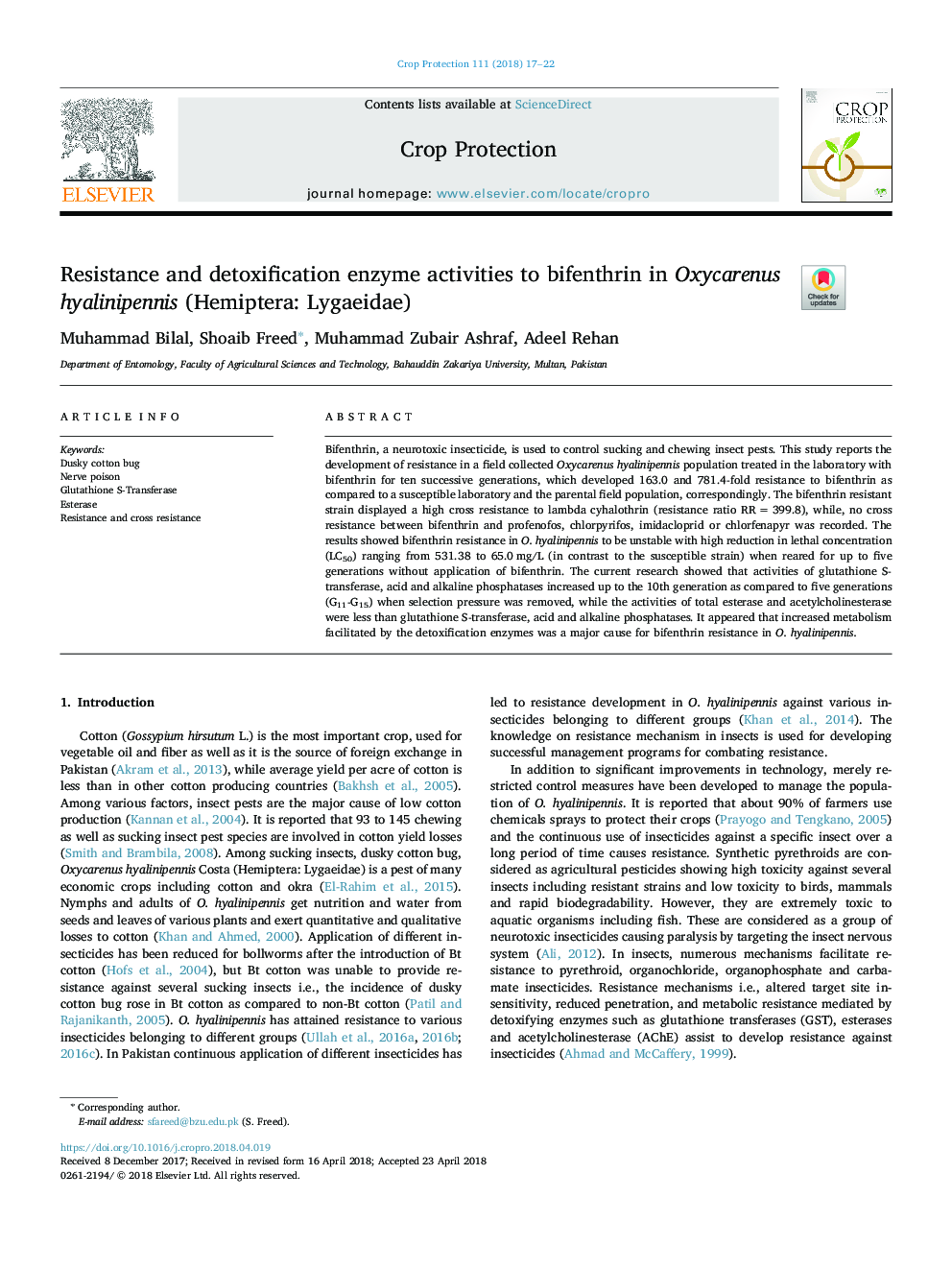| Article ID | Journal | Published Year | Pages | File Type |
|---|---|---|---|---|
| 8878004 | Crop Protection | 2018 | 6 Pages |
Abstract
Bifenthrin, a neurotoxic insecticide, is used to control sucking and chewing insect pests. This study reports the development of resistance in a field collected Oxycarenus hyalinipennis population treated in the laboratory with bifenthrin for ten successive generations, which developed 163.0 and 781.4-fold resistance to bifenthrin as compared to a susceptible laboratory and the parental field population, correspondingly. The bifenthrin resistant strain displayed a high cross resistance to lambda cyhalothrin (resistance ratio RRâ¯=â¯399.8), while, no cross resistance between bifenthrin and profenofos, chlorpyrifos, imidacloprid or chlorfenapyr was recorded. The results showed bifenthrin resistance in O. hyalinipennis to be unstable with high reduction in lethal concentration (LC50) ranging from 531.38 to 65.0â¯mg/L (in contrast to the susceptible strain) when reared for up to five generations without application of bifenthrin. The current research showed that activities of glutathione S-transferase, acid and alkaline phosphatases increased up to the 10th generation as compared to five generations (G11-G15) when selection pressure was removed, while the activities of total esterase and acetylcholinesterase were less than glutathione S-transferase, acid and alkaline phosphatases. It appeared that increased metabolism facilitated by the detoxification enzymes was a major cause for bifenthrin resistance in O. hyalinipennis.
Keywords
Related Topics
Life Sciences
Agricultural and Biological Sciences
Agronomy and Crop Science
Authors
Muhammad Bilal, Shoaib Freed, Muhammad Zubair Ashraf, Adeel Rehan,
